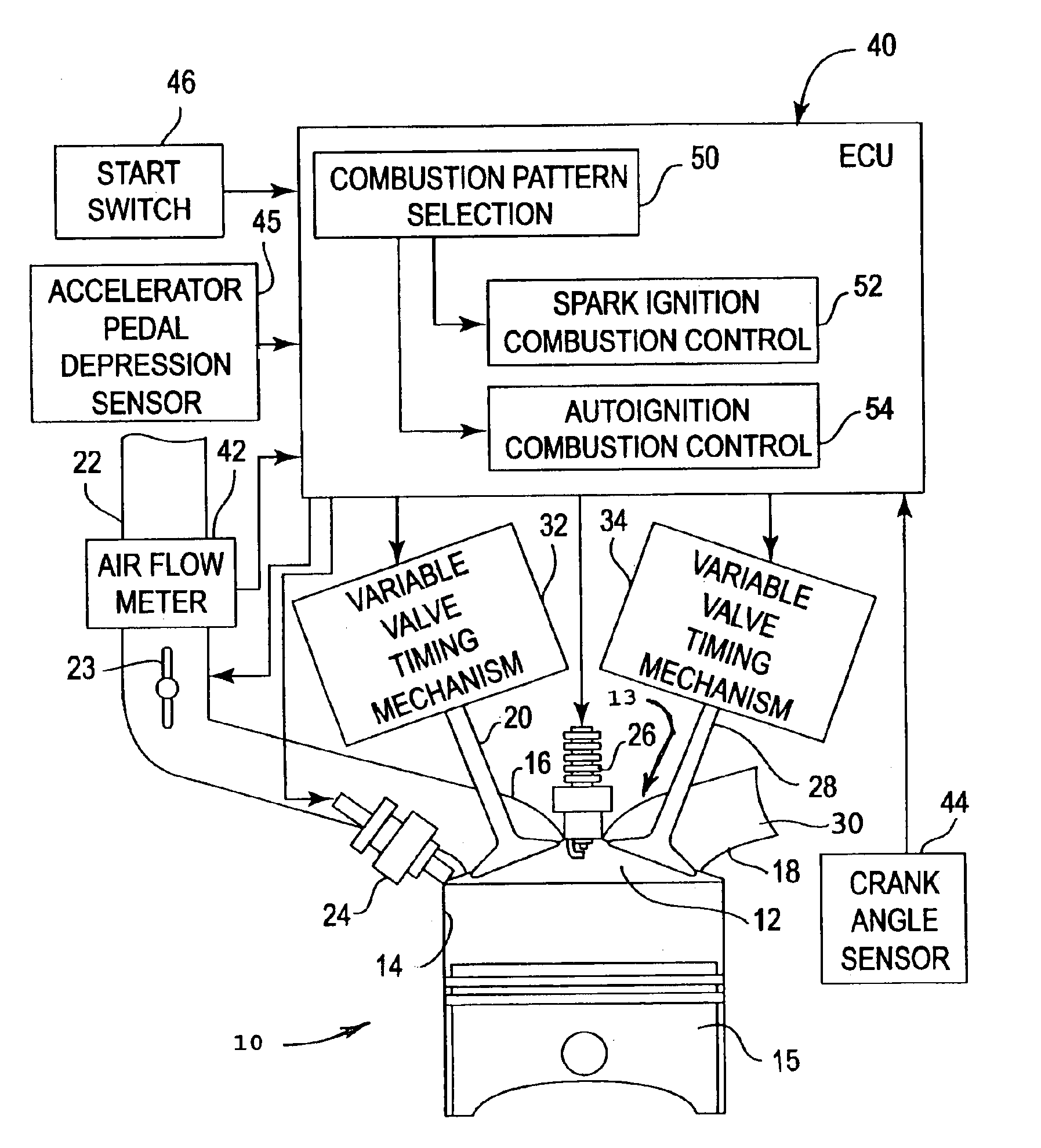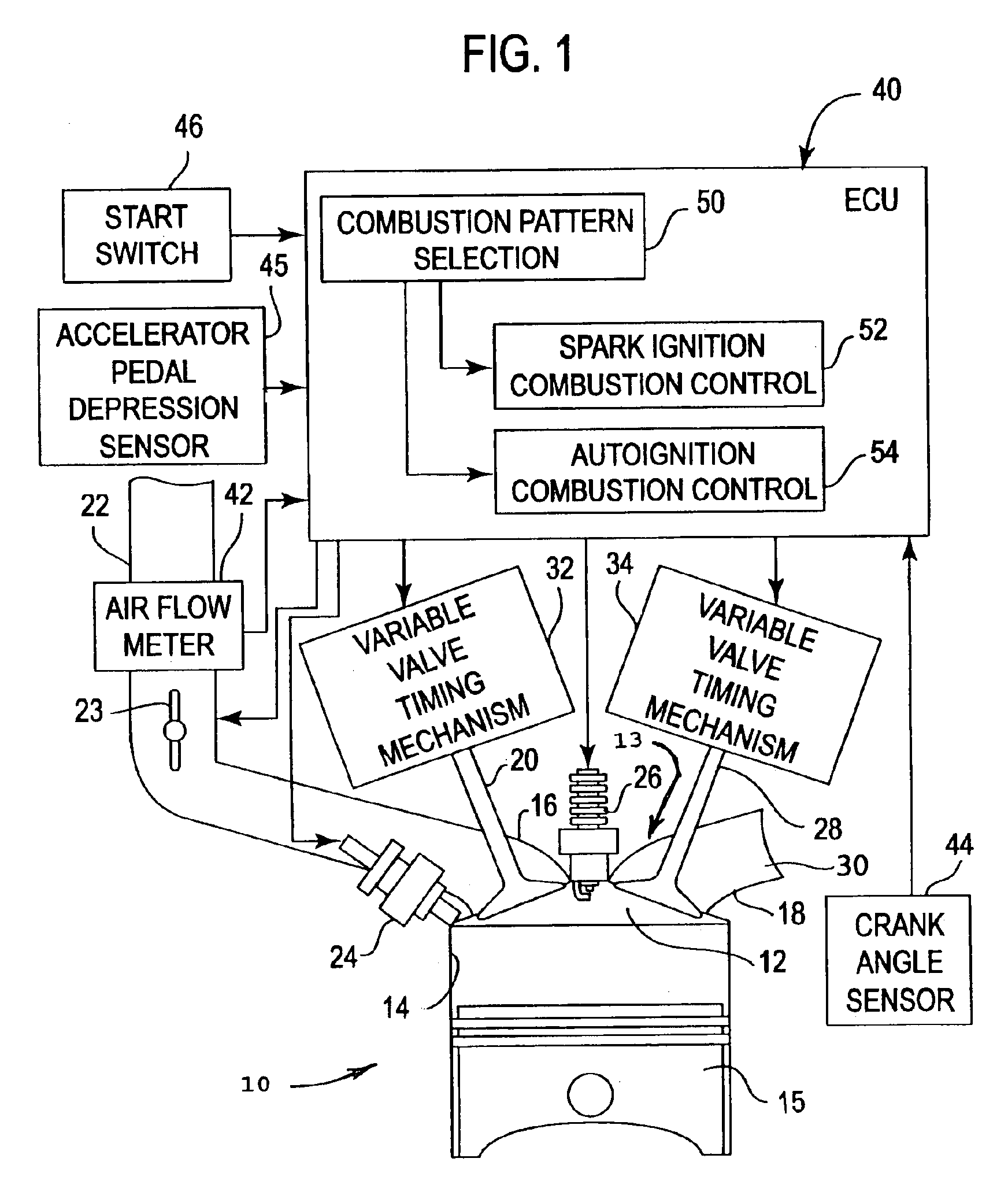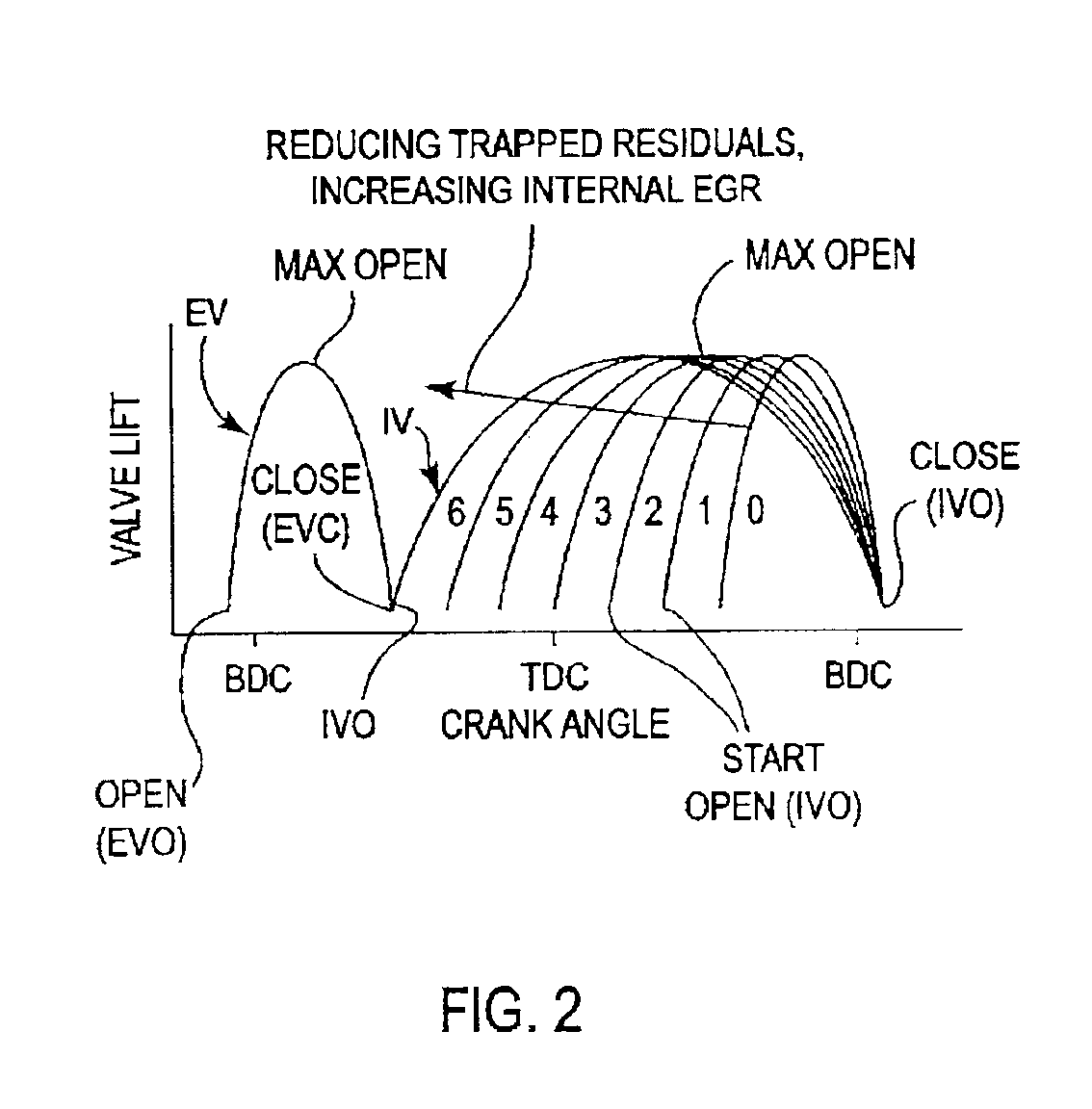Control of autoignition timing in a HCCI engine
a technology of autoignition timing and internal combustion engine, which is applied in the direction of electrical control, machines/engines, non-mechanical valves, etc., can solve the problems of increased heat transfer loss, increased co emissions, and combustion noise, and reduce combustion efficiency
- Summary
- Abstract
- Description
- Claims
- Application Information
AI Technical Summary
Benefits of technology
Problems solved by technology
Method used
Image
Examples
Embodiment Construction
[0022]Referring to FIG. 1, a four cycle internal combustion engine 10 is illustrated as comprising a combustion chamber 12 formed by a conventional cylinder head 13, cylinder 14, and piston 15. The combustion chamber 12 is expanded and contracted by the piston 15 reciprocating in the engine cylinder 14. An intake port 16 and exhaust port 18 of the engine 10 communicate with the combustion chamber 12 in conventional manner. An intake valve 20 is provided in the intake port 16. An intake passage 22 of the engine communicates with the intake port 16. Air is aspirated from the intake passage 22 through the intake port 16 into the combustion chamber 12 when the intake valve 20 is open due to the piston descending in the cylinder. A throttle 23 is provided in intake passage 22 for adjusting the intake air flow rate of the engine in a spark ignition (SI) mode. In HCCI mode, the throttle 23 is preferably fully open as shown in FIG. 1. A conventional fuel injector 24 and spark plug 26 are pr...
PUM
 Login to View More
Login to View More Abstract
Description
Claims
Application Information
 Login to View More
Login to View More - R&D
- Intellectual Property
- Life Sciences
- Materials
- Tech Scout
- Unparalleled Data Quality
- Higher Quality Content
- 60% Fewer Hallucinations
Browse by: Latest US Patents, China's latest patents, Technical Efficacy Thesaurus, Application Domain, Technology Topic, Popular Technical Reports.
© 2025 PatSnap. All rights reserved.Legal|Privacy policy|Modern Slavery Act Transparency Statement|Sitemap|About US| Contact US: help@patsnap.com



